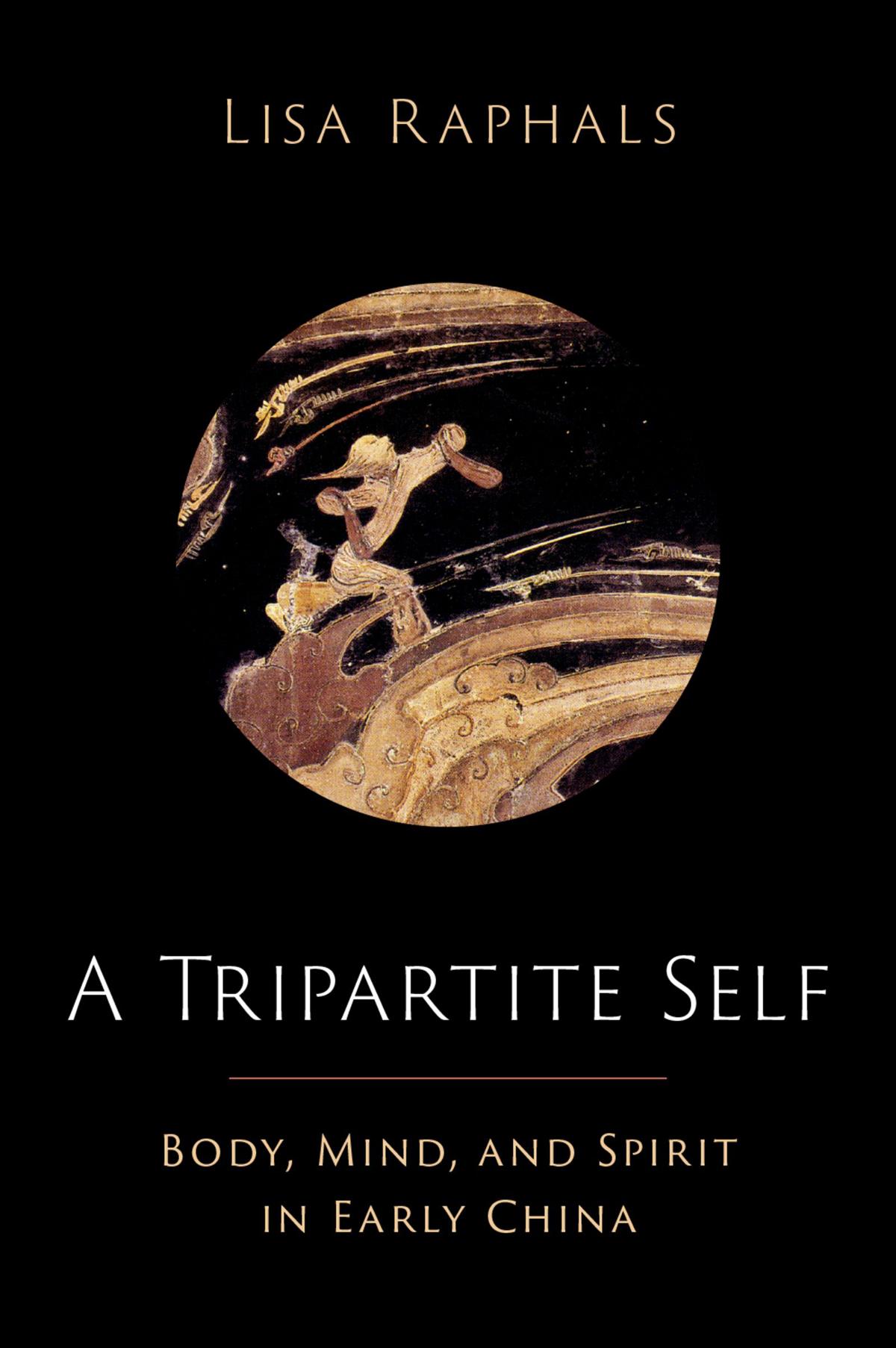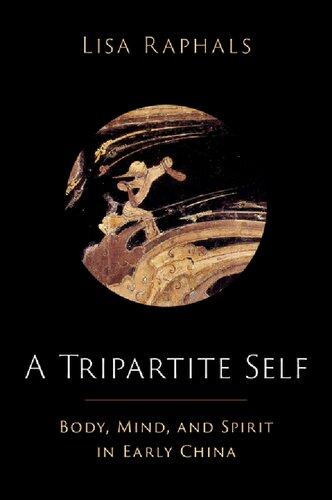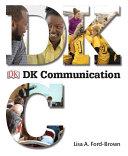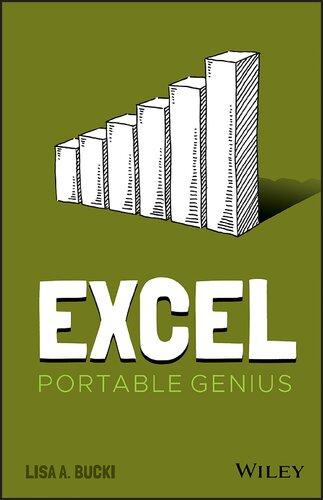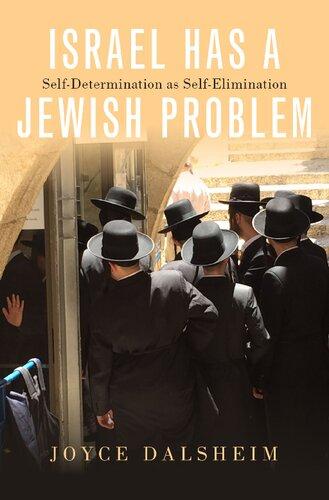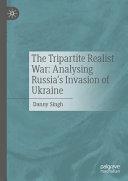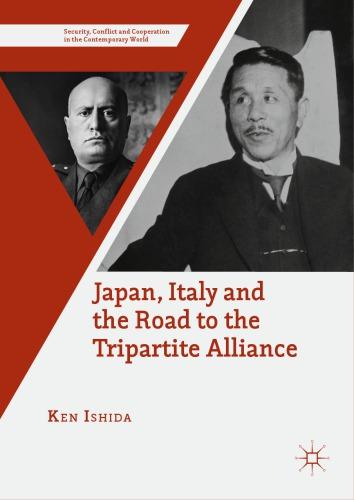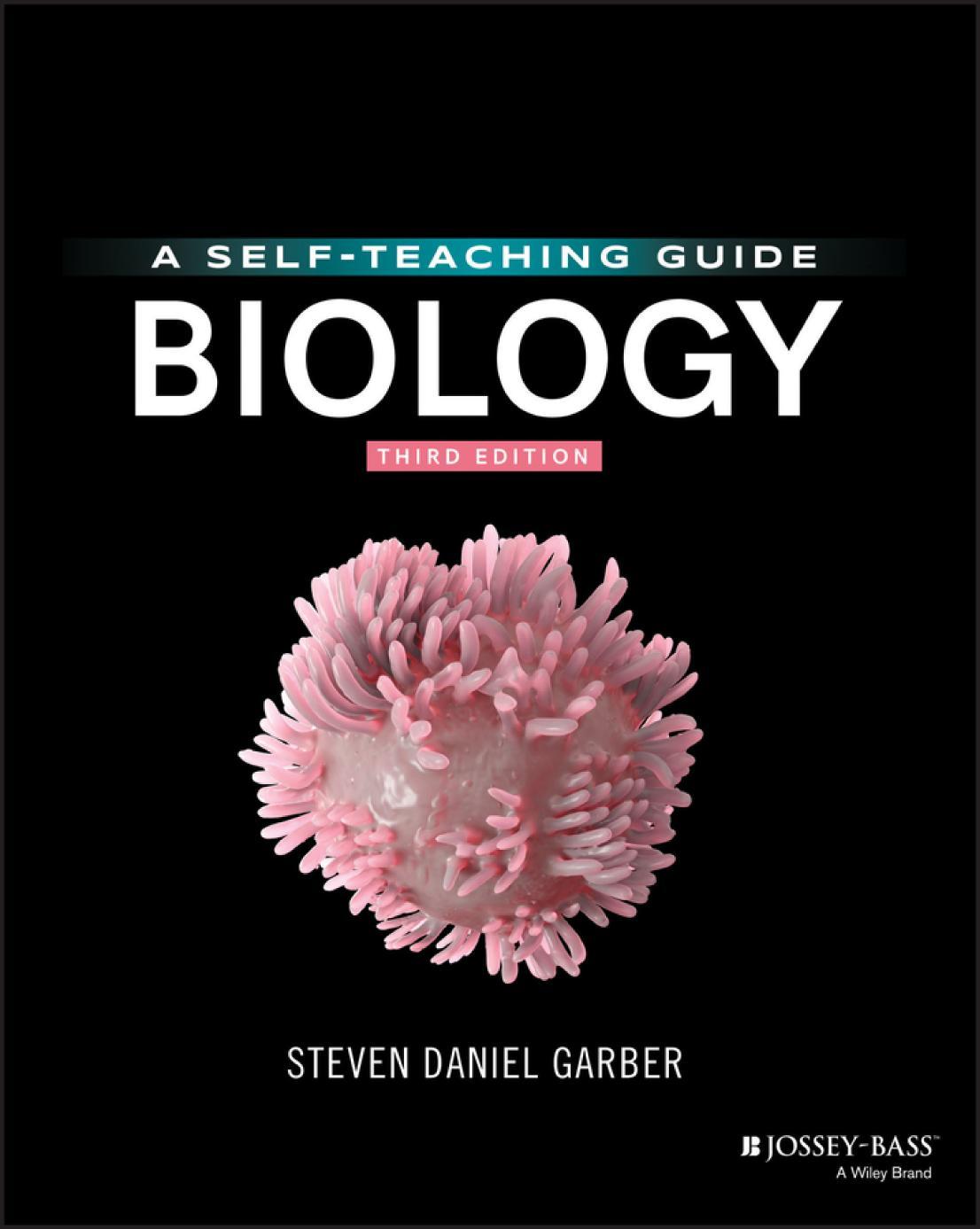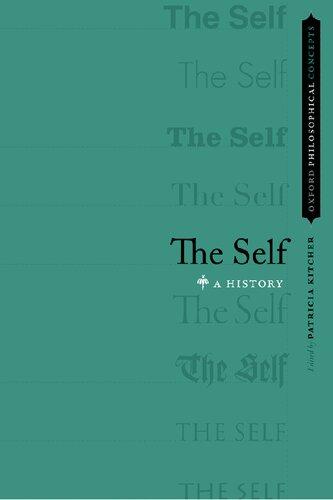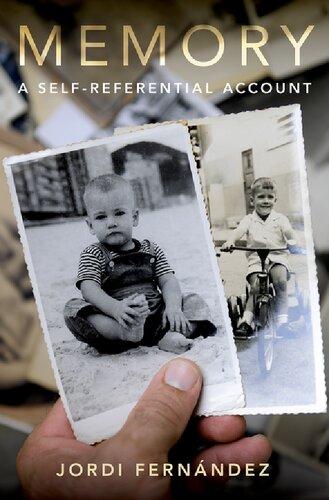A Tripartite Self
Body, Mind, andSpirit in Early China
LISA RAPHALS
Oxford University Press is a department of the University of Oxford. It furthers the University’s objective of excellence in research, scholarship, and education by publishing worldwide. Oxford is a registered trade mark of Oxford University Press in the UK and certain other countries.
Published in the United States of America by Oxford University Press 198 Madison Avenue, New York, NY 10016, United States of America.
© Oxford University Press 2023
All rights reserved. No part of this publication may be reproduced, stored in a retrieval system, or transmitted, in any form or by any means, without the prior permission in writing of Oxford University Press, or as expressly permitted by law, by license, or under terms agreed with the appropriate reproduction rights organization. Inquiries concerning reproduction outside the scope of the above should be sent to the Rights Department, Oxford University Press, at the address above.
You must not circulate this work in any other form and you must impose this same condition on any acquirer.
Library of Congress Cataloging-in-Publication Data
Names: Raphals, Lisa Ann, 1951– author.
Title: A tripartite self : body, mind, and spirit in early China / Lisa Raphals.
Description: New York, NY, United States of America : Oxford University Press, [2023] | Includes bibliographical references and index.
Identifiers: LCCN 2022027400 (print) | LCCN 2022027401 (ebook) | ISBN 9780197630877 (hardback) | ISBN 9780197630891 (epub)
Subjects: LCSH: Philosophy, Chinese. | Self (Philosophy) | Mind and body. | Dualism. | Spirit.
Classification: LCC B126 .R37 2023 (print) | LCC B126 (ebook) | DDC 181/.11—dc23/eng/20220907
LC record available at https://lccn.loc.gov/2022027400
LC ebook record available at https://lccn.loc.gov/2022027401
DOI: 10.1093/oso/9780197630877.001.0001
ThisbookisforJohnBaez.
Contents
Acknowledgments
NotesonConventions,Editions,andTranscriptions
Introduction
Intersecting Perspectives
Mind–Body and Spirit–Body Dualism
A Tripartite Self
Plan of the Book
1. Semantic Fields of Body, Mind, and Spirit
Bodies
Minds
Spirit(s)
2. Virtue, Body, and Mind in the Shijing
Bodies in the Shijing
Xin
Spirits
More on Embodied Virtue
Conclusion
3. Mind and Spirit Govern the Body
Body, Mind, and Spirits in the Analects
The Mozi
The Emergence of Internal Spirit in the Guanzi
Heart–Mind as Ruler in the Mencius
Xunzi and the Hegemony of the Heart–Mind
Rulers and Ruled in the Guodian Texts
The Heart–Mind Is What Is at the Center (Xinshiweizhong)
Heart–Mind and Spirit in the Huainanziand Wenzi
Conclusion
4. Body, Mind, and Spirit: A Tripartite View
Yang Zhu’s Discovery of the Body
Mind and Spirit in the Guanzi
The Zhuangzi
Spirit and Body in the Shiwen
The Huainanzi
Conclusion
5. Body, Mind, and Spirit in the Guodian Manuscripts
Body, Emotion, and Heart–Mind in Humans and Animals
Heart–Mind and Body in the XingziMingchu
Heart–Mind and Body in the Wuxing
Conclusion
6. Body, Mind, and Spirit in Early Chinese Medicine
Mind–Body Dualism and Medical Texts
Shénand Xinin the HuangdiNeijing
Conclusion
Conclusions
Inner and Outer Reconsidered
Personal Identity and Persistence
Embodied Cognition
Glossary
Appendix1:TimeLines
Appendix2:SemanticFieldsofBody,Mind,Soul,andSpirit
Appendix3:TheBrainintheHuangdiNeijing
References
Index
Acknowledgments
This book is an exploration of the boundaries between body, mind, and spirit in early China. It is also part of two ongoing interdisciplinary and intercultural explorations that have informed my scholarly work. One is the engagement between the disciplines of philosophy and history—including the history of science—from a perspective also informed by anthropology. The other is the comparative study of Chinese and Greek antiquity from a shifting viewpoint informed by all three disciplines: this book focuses on early China, but it is part of a larger comparative project. This approach is not well recognized in the contemporary academy, and for this reason I shall always be indebted to the teachers, both formal and informal, who informed and encouraged it in diverse ways: Anthony Yu, Stephen Toulmin, Gregory Nagy, A. K. Ramanujan, A. C. Graham, Sir Geoffrey Lloyd, and Michael Loewe. These debts can never be repaid; their example can only be emulated.
Several colleagues have read all or part of the manuscript at various stages: Sarah Allan, Alba Curry, Mark Csikszentmihalyi, Lothar von Falkenhausen, Martin Kern, Karyn Lai, Perry Link, Michael Puett, two anonymous readers from T’oung-pao, and three anonymous readers from Oxford University Press. This project has benefited from residential fellowships and financial support from several institutions. I have received ongoing support from the University of California, Riverside. Committee on Research (COR) grants supported the initial preparation of the manuscript. A fellowship at the Harvard Center for Hellenic Studies was postponed by Covid but offered invaluable library resources and Zoom seminars.
Three chapters of this book draw on prior publications. Some of the early groundwork was done in Raphals 2015. Chapter 2 is an expanded version of Raphals 2021. Chapter 5 is based on Raphals 2019, and Chapter 6 is based on Raphals 2020.
I have benefited from discussions with graduate students Alba Curry and Ryan Harte. The heroic librarians at the Interlibrary Loan department have been a lifeline over many years.
I am also grateful to the Chinese Department of the National University of Singapore (NUS), which hosted several talks and a summer of research in 2019. I benefited from philosophical conversation partners, especially Kenneth Dean and Lo Yuet-Keung.
The ideas in this book are informed by the ideas of many scholars at all these institutions. Much of it has been presented at conference talks and invited lectures over several years. They include the Bryn Mawr Classics Colloquium, Central European University (then in Budapest), the University of California Riverside Philosophy Department, the Committee on Social Thought, University of Chicago, Hong Kong Baptist University, Shanghai East Normal University, Fudan University, Duke-Kunshan University, the conference “Comparative Global Antiquity,” co-organized by Yale-NUS College and the Postclassicisms Network, Princeton University, the National University of Singapore Chinese Department, the Harvard Center for Hellenic Studies, and the Harvard Ancient Studies Visiting Lectureship.
Finally, I have benefited from discussions and correspondence with colleagues and friends: Sarah Allan, Bai Tongdong, Erica Brindley, Douglas Cairns, Cléo Carastro, Chai Jie, Alan Chan, Constance Cook, Alba Curry, Kenneth Dean, Esther Eidinow, Chris Fraser, Brooke Holmes, Elisabeth Hsu, Richard King, Karyn Lai, Liu Chun, Lo Yuet-Keung, Hui-Chieh Loy, Michael Lackner, Bill Mak, Franklin Perkins, Poo Mu-chou, Michael Puett, Michele Salzman, Eric Schwitzgebel, Mira Seo, Neil Sinhababu, Edward Slingerland, Sharon Small, Charles Stocking, Julia Strauss, Winnie Sung, Yumi Suzuki, Tan Sor Hoon, Benoit Vermander, Curie Virág, Wang Aihe, Robin Wang, and Zhou Yiqun. Responsibility for all errors and omissions is, of course, my own.
Notes on Conventions, Editions, and Transcriptions
The Pinyin transliteration system is used throughout, including in quoted text, except for the names of authors who use non-Pinyin spellings for their own names and for terms that are well known in a Latinate version (e.g., Confucius).
Chinese characters are included in the text for translated passages and where immediate reference is especially convenient. All Chinese characters are given in traditional form.
Chinese translations are my own unless otherwise indicated. Existing translations of Chinese texts are included for reference and are cited by name (i.e., Biot 1.409) rather than by name and date.
Certain key terms only lose by translation, or worse, the shortcut of translation introduces confusion by force of habit. Therefore, I have chosen to leave certain key terms as they are. These include the Chinese terms dao (familiar to some as tao), qi, and yin and yang. In other cases, I have retained Chinese titles, for example for the Zuozhuan(Zuo Transmissions).
Throughout this book, I use the following English translations for key terms for body, mind, and spirit:
BODY: Form: for xing形
Frame, occasionally limbs: for ti體
Person or embodied person: for shēn身
MIND: heart–mind, occasionally mind or heart, for xin心
SPIRIT: spirit for shén神, in the meaning of both external spirits and internal spirit
Where possible, references are to the Chinese University of Hong Kong Institute for Chinese Studies (ICS) Concordance Series.
Chinese Standard Histories are from the Zhonghua shuju series (Beijing, 1959–) and are cited by chapter and page number (e.g., Hanshu 30, 1772). For the Zuozhuan, the modern edition of Yang Bojun (1991) is used because of its easy availability, convenience, and widespread use by other scholars. In this and other editions that use modern pagination, references give page number, followed by section or subsection (e.g., Zuo, 849, Cheng, 10.4).
Premodern texts, excavated texts, and archaeological monographs without individual authors are cited by title. Short archaeological reports without individual authors are cited by journal (e.g., from Wenwu: WW 1979.19: 14–24).
The following abbreviations are used for major Chinese primary and secondary texts and journals. Full entries are found in the Bibliography.
AM Asia Major
BEFEO Bulletin de l’École Française d’Extrême-Orient (Paris)
BIHP Bulletin ofHistory andPhilology (Taiwan)
BMFEA Bulletin ofthe Museum ofFar Eastern Antiquities (Stockholm)
BSOAS Bulletin ofthe SchoolofOrientalandAfrican Studies (London)
CCT Contemporary Chinese Thought
Dao Dao: An InternationalJournalofChinese Philosophy
DWY Daojia wenhuayanjiu (Shanghai)
EASTM East Asian Science, Technology andMedicine
EC Early China
EO Extrême-Orient, Extrême-OccidentCahiers de recherches comparatives (Paris)
FPC Frontiers ofPhilosophy in China
Guodian Guodian Chumu zhujian
HHS Hou Hanshu
HJAS HarvardJournalofAsiatic Studies
HNZ Huainanzi
HS Hanshu
ICS Institute for Chinese Studies Concordance Series(Hong Kong)
JA Journale Asiatique
JAAR Journalofthe American Academy ofReligion
JAOS Journalofthe American OrientalSociety
JCC JournalofCognition andCulture
JCP JournalofChinese Philosophy
JCR JournalofChinese Religions
JDS JournalofDaoistStudies
JRAS Journalofthe RoyalAsiatic Society
L Littré, E. (1839–1861) Oeuvres completes d ‘Hippocrate, 10 vols., Paris
LH Lunheng
LJ Liji
LS Huangdineijing lingshu (in Shibue Chūsai 澀江抽齋, 2003)
LSCQ Lüshichunqiu
MS Monumenta Serica
MWD MawangduiHanmu boshu
PEW Philosophy East&West
SBBY Sibu beiyao
SEP StanfordEncyclopedia ofPhilosophy
SJ Shiji
SKQS Sikuquanshu
SSJZS Shisanjing zhushu
SW Huangdineijing suwen(Yamada Gyōkō 山田業廣, 2004)
TP T’oung-pao
U Unschuld2016
UT UnschuldandTessenow 2011
WW Wenwu
Introduction
Chinese philosophy has long recognized the importance of the body and emotions in extensive and diverse self-cultivation traditions. Philosophical debates about the relationship between mind and body are often described in terms of mind–body dualism and its opposite, monism or some kind of “holism.”1 Monist or holist views agree on the unity of mind and body, but with much debate about what kind, whereas mind–body dualists take body and mind to be metaphysically distinct entities.2 The question is important for several reasons. Several humanistic and scientific disciplines recognize embodiment as an important dimension of the human condition. One version, the problem of mind–body dualism, is central to the history of both philosophy and religion. Some account of relations between body and mind, spirit, or soul is also central to any understanding of the self. Recent work in cognitive and neuroscience underscores the importance of our somatic experience for how we think and feel.3
Debates about mind–body dualism have become important in Chinese and comparative philosophy because of claims that Chinese thought is “holist”—including claims that there was no mind–body dualism in early China—and contrasts between supposed Chinese holism and “Western” dualism. Holist views make virtually no distinction between body and mind and spirit, and they tend to reduce all three to material or quasi-material substances, often identified with qi 氣. 4 Dualist views set up a distinction between a material body and a nonmaterial mind, soul, or spirit. Overall, dualist views have historically been Eurocentric, but recent claims for concepts of mind–body dualism in early China argue against the holist position in a Chinese context. Claims for Chinese concepts of mind–body dualism are part of a broader critique of a “neoOrientalist” tendency to portray Chinese and Western thought as
radically different.5 This debate has renewed interest in the role of mind–body interactions in early Chinese thought. Much of the discourse of mind–body dualism uses a problematic binary, without acknowledgment of the very separate roles of “mind” and “spirit.” Although this issue has received some attention in experimental psychology, it is often ignored in philosophical studies.6 It also matters in a broader context, both for debates about cultural particularism and human universals, and for understanding of personal autonomy and agency.
I begin by outlining five overlapping intellectual and disciplinary perspectives that address—or somehow fail to address—problems of mind and body. In the next two sections, I focus on problems with mind–body dualism and propose an alternative view of a tripartite self. I conclude with the plan of this book and how it attempts to address these questions.
Intersecting Perspectives
A significant problem is that the entire topic is distributed among (or between) a host of problématiques and even disciplines, which often talk past each other. These include (1) studies of concepts of the body (Chinese shēntiguan 身體觀) or embodiment; (2) studies of the emotions, including their relations to cognition and to embodiment, across a range of disciplines; (3) studies of the mind in the context of self-cultivation, often within the discipline of ethics or philosophy, (4) studies of broader issues of selfhood, personhood, and, in some cases, autonomy, often within the discipline of philosophy; and (5) studies of mind–body dualism. Some of these include discussion of conceptual or root metaphors.
In addition, most studies of mind–body dualism in early China are either not comparative or anachronistically compare early Chinese texts with modern European philosophers such as Kant, Leibniz, and Spinoza. These examples illustrate the wide range of texts and methods scholars have used to explore problems of body and mind in early China and some of the very different conclusions reached.
Embodiment
In recent years, a range of studies have explored early Chinese understanding of the body. These studies vary in their themes, textual sources, and methods, but a few themes and approaches are especially prominent. One group of studies focuses on specifically Confucian texts (including some that purport to present an “early Chinese view” of the body). Roger Ames focuses on specifically Confucian understandings of the body in an important early study of Chinese views of the body. Other studies follow a particular term across one or several texts.7
An important study by Mark Edward Lewis on the construction of space in early China identifies an important debate about how the body arose as a means of constructing and organizing space in fourth-century (BCE) China and points to very different accounts of the body in writings associated with Yang Zhu, parts of the Guanzi, Mencius, and the authors of the Zuozhuan. Lewis’s study also explores some of the consequences of depicting the body as a temporary compound of diverse elements and examines how the body was an element in a larger whole, in analogies between the body and the cosmos and between the body and the state.8 Extensive scholarship has explored analogies between the body and the state or body politic, and analogies between the microcosm of the body and the macrocosm of the cosmos.9
A group of Sinophone scholars have explored the study of concepts of the body from a range of disciplinary and textual perspectives.10 Yang Rubin’s study of Confucian views of the body focuses on Mencius and explores the body foundation of Confucian theories of mind and metaphysics. Yang understands the body as a complex structure of form (xing 形), qi, and spirit (shén 神), closely linked with the heart–mind (xin心).11 He emphasizes the importance Confucians attach to social aspects of the body, and he argues that in Confucian views, mind and body are one, Heaven and humanity are one, and inside and outside are continuous.12 From a very
different point of view, Hidemi Ishida focuses on the understanding of the body in medical texts.13
Roles of the Emotions
Recent studies of the emotions in Chinese philosophy also engage the boundary between body and mind and soul and spirit. Some of this investigation has centered on debates about the word qing 情 and on whether, how, and at what specific historical point it came to refer to emotions, but this issue is not relevant to the present inquiry.14 Of greater relevance are investigations of the nature of the relations between the emotions, the body, and the heart–mind. These investigations fall into two very different groups.
One is the claim that emotion motivates virtuous action and, more specifically, that the correct emotions are a prerequisite for virtuous action.15 A weak version of this view is the claim that intuitions, moral judgments, and emotions naturally work in tandem.16 A stronger version of this view is the claim—expressed in the Analects, Mencius, Xunzi, and elsewhere—that emotions are central to virtuous action. But why? And how do the emotions promote virtue? Do they work by influencing the body or the mind, or is there even a clear distinction?
Texts that link emotion with virtuous action give very different explanations. Warring States texts differ considerably in their accounts of the relations between emotions, primary energy, virtuous conduct, and correct ritual. A few examples suggest the range and complexity of these disagreements.
An oft-cited passage in the Lunyu suggests a central role of the mind, when Confucius states that at seventy he could “follow the desires of his heart–mind” (cong xin suo yu 從 心 所 欲 ) without overstepping propriety.17 He considered profound and spontaneous emotions to be one of the defining attributes of a perfected person, hence his repeated insistence on emotional transparency and authenticity.18 Curie Virág argues that Confucius’s emphasis on the vital role of emotions in moral life reflects a new awareness that,
properly understood and integrated, the emotions could be an important source for unity and could contribute to the stable identity and continuity of the self.
A possible explanation for this view of the emotions comes from a passage in the Zuozhuan on ritual, which describes the ability of (correct) emotions to structure natural and primary bodily energies:
則天之明,因地之性,生其六氣,用其五行,氣為五味,發為五色,章為五 聲…民有好惡喜怒哀樂,生于六氣,是故審則宜類,以制六志,哀有哭泣,樂 有歌舞,喜有施舍,怒有戰鬥,喜生於好,怒生於惡
They pattern themselves on the brightness of Heaven, follow the inherent nature of earth, produce the six qi and make use of the Five Phases.19 The qi form the five flavors, emerge as the five colors, and find patterns as the five sounds. . . . The people have likes and dislikes, pleasure and anger, sorrow and joy. These are born from the six qi. Thus one examines patterns and accords with categories in order to control the “six intents.” For sorrow there is formalized weeping, for joy there is music and dance, for pleasure there is bestowing gifts and rewards, for anger there is warfare and fighting. Pleasure is born from likes and anger from dislikes.20
This passage describes primary and natural energies that manifest in the body as emotions and explains how they can be guided and channeled by appropriate ritual, for example, ritual mourning for sorrow and ritual music and dance for joy. The Zuozhuan repeatedly asserts the primacy of ritual in constituting human life by guiding emotions and bodily energies. Mencius goes one step further and argues that, to be virtuous, virtuous action must be accompanied by the right feelings.21 For Mencius wisdom— as a “sprout” of virtue—is directly linked to the ability to feel sympathy for actual or potential suffering.22 For these and other Chinese thinkers who linked the emotions to virtuous action, ritual (li 禮) was an important component. But were correct emotions and correct ritual action the cause of virtue or the result? Confucius seems to have understood ritual as an enactment of virtue, especially the key virtue of benevolence or humaneness (ren 仁).23
Another account of the relation between emotion and ritual occurs in a text excavated from a late fourth-century tomb at Guodian 郭 店 titled ““Human Nature Comes from the Mandate” (Xingzimingchu性自命出). Here, humans exist in a world of “things” (wu 物, including humans) and things have natures. These things, with their natures, naturally interact. But our (human) natures include particular modes of energy: emotional dispositions. As a result, these natural interactions cause us to react emotionally:
喜怒哀悲之氣,性也。及其見於外,則物取之也。
The qi of joy, anger, sorrow, and sadness are inherent nature. When they are manifested externally, things get a hold on them.24
The text acknowledges that these energies/emotions are inherent in human nature, so it is impracticable to try to get rid of them. Instead, as Michael Puett usefully describes it, we should isolate instances of “good” interactions and responses and:
take that moment and make it into a ritual which means having people re-do it, developing that same dispositional sense that occurred at that moment when (surprisingly) people acted well toward each other, thus inculcating in themselves the proper energies associated with that good response. Over time, a tradition of ritual repertoires accumulates from which humans slowly learn different ways of guiding their emotions, and thus slowly learn to have better dispositional responses toward those around them. These repertoires of ritual also train the next generation to have better dispositional responses toward those around them.25
Or as the Guodian text says: ritual arises from the dispositions.26 Similarly, we can use ritual to change dangerous and malevolent ghosts into beneficent ancestors. For example, in the “Meaning of Sacrifices” chapter of the Book of Rites, when Zai Wo 宰 我 asks Confucius about the names “ghost” and “spirit,” he responds:
氣也者,神之盛也;魄也者,鬼之盛也;合鬼與神,教之至也。 眾生必死,死 必歸土:此之謂鬼。骨肉斃於下,陰為野土;其氣發揚于上,為昭明,
The qi is the flourishing of spirit; the po is the flourishing of the ghost. Combining the ghost and the spirit is the highest teaching. All the living must die, and when they die, they must return to the earth; this is what is called ghosts. The bones and flesh die below; concealed, they become the earth of the wild fields. But the qiissues forth and rises up in glorious brilliance.27
As a result, “spirits”—the qithat float to Heaven after death—are worshiped as ancestors, which includes ranking ancestors into lineages and offering cult according to lineage rank in an ancestral hall. One ritual responded to qienergies; another responded to po.28
A very different view is the claim that emotions interfere with selfcultivation. The Neiye 內業 (Inner Workings) chapter of the Guanzi introduces the view that the emotions—closely associated with the body and senses—threaten the mind’s energies. Other scholars address the very different roles ascribed to the emotions in selfcultivation in the Zhuangzi.29 In one version of the claim, they create imbalance. In a stronger version of this claim—found in medical texts especially—emotions imbalance the body to the point of causing disease.30
Mind, Body, and Self-cultivation
A third group of approaches discusses something analogous to what Foucault has called “the care of the self,” better understood in a Chinese context as “self-cultivation” (xiushēn修身) or “nurturing life” (yangsheng 養生). Traditions of self-cultivation fundamentally involve the care and preservation of body, mind, and spirit, but often disagree about relations between them. Some of these inquiries link the study of embodiment to the study of Chinese self-cultivation traditions. Several recent studies have emphasized the importance of embodied self-cultivation traditions, from very different points of view.
Michael Puett (2002) argues that the fourth century BCE was a turning point in Chinese understanding of the relation between
humans and gods. Instead of trying to propitiate divine powers, fourth-century critics of court sacrificial practices argued that it was possible for humans to use self-cultivation practices to become a spirit and to appropriate these powers, though these thinkers disagreed on how to do so. In light of these developments, Puett emphasizes that shén—spirit(s)—includes both extrahuman spirits with powers over natural phenomena and also refined forms of qi within humans. Equally important is why Warring States thinkers began to claim that they could become spirits.31
Puett argues that Bronze Age sacrificial ritual was fundamentally agonistic because of the capricious nature of spirits; it was used to transform ancestors into gods and create a divine hierarchy that humans could understand and manipulate.32 Warring States thinkers sought to reshape dominant attitudes and to reduce the distance between humans and gods through self-cultivation practices that allowed a person to become a spirit. “Self-divinization” increased individual human control and made it possible to bypass divination and sacrifice. This approach offers a very different view of Confucius’s famous advice to keep a respectful distance from gods and spirits and to concentrate on human concerns.33 It also offers new understandings of the very different self-cultivation practices described in texts as different as the Neiye and “Arts of the Mind” chapters of the Guanzi, the Mencius, the Zhuangzi, and the Chuci, among others.34 These texts differ in the self-cultivation methods they recommend, but all actively engage the body, mind, and spirit through the concentration of vital essence (jing精) and qi.
It is worth emphasizing that, from an anthropological point of view, the scenario Puett describes is widespread. In a recent posthumous collection, the anthropologist Marshall Sahlins notes that, in contrast to Western modernity, the majority of cultures throughout human history have recognized a variety of gods, ancestors, plant and animal souls, and other entities often called “spirits” not as “supernatural” beings of some mysterious kind, but as real persons—or metapersons—as immanent in human existence. These “spirits” have “the essential attributes of persons, a core of
the same mental, temperamental, and volitional capacities.”35 Sahlins’s point is to point to a new practice of anthropology that is consistent with this historical reality. The point for purposes of the present discussion is that interactions between humans and spirits, including the internalization of spirit and attempts to use selfcultivation to obtain spirit powers, are part of that history.
A study of wuwei 無 為 , or “acting without acting” by Edward Slingerland, argues for the centrality of wuweias a spiritual ideal for thinkers as diverse as Confucius, Mencius, the authors of the Daodejing, Zhuangzi, and Xunzi. Slingerland describes wuwei as “a state of personal harmony in which actions freely and instantly from one’s spontaneous inclinations,” yet both manifest supreme efficacy and harmonize with the demands of conventional morality. He describes it as both a mental state, characterized by effortless unselfconsciousness, and a mode of action that accords with the normative order of the cosmos.36 He argues that wuweiwas central to a worldview characterized by the belief that the cosmos has a normative order in which humans have fallen away from their proper roles and modes of behavior. According to this shared view, a person who has regained this original state through wuwei acquires power or charismatic virtue (de 德 ). But, paradoxically, this ideal of “effortless action” can only be regained through a process of selfcultivation characterized by the need to “try not to try.”
For some Warring States thinkers—Mencius, the authors of the Daodejing, and Zhuangzi, especially—wuwei is already inherent in our nature that conforms to natural patterns, and it can be accessed by allowing it to manifest. For others, especially Xunzi, we can attain this state only by extensive training and effort. Either viewpoint admits a tension between effortless action and the effort needed to achieve it. For both, the methods for attaining wuwei, as with Puett’s “self-divinization,” are corporeal, mental, and spiritual. Mark Csikszentmihalyi describes a fourth-century “material virtue” tradition, exemplified in the Menciusand two versions of the Wuxing 五 行 (“Five Kinds of Action”) recovered from Guodian and Mawangdui 馬王堆 (Changsha, Hunan, c. 168 BCE). Csikszentmihalyi
argues that these texts provide “a detailed moral psychology describing the process of the cultivation of the virtues.”37 They address the question of what a virtue is and describe virtues in terms similar to bodily humors. The book argues that material virtue is an important part of the description of a “sage” and examines a series of fourth- through second-century (BCE) texts as elements in a continuum that includes medicine, religion, and philosophy.
Csikszentmihalyi argues that a “material virtue” tradition developed as a Ru response to criticisms (initially in the Mozi and Zhuangzi) of their claims that “archaic” rituals were effective for either self-cultivation or the creation of social order. He considers the core texts of this tradition to be the Menciusand the Wuxing.
These texts include accounts of jingand qi, and Csikszentmihalyi applies these accounts to early Confucian ethics. He argues that for Mencius and a group of thinkers associated with Zi Si and found in excavated texts, virtue manifested physically in the body and was inseparable from it. Central to this view is an account of a material virtue grounded in the transformation of qi. According to both Mencius and the Wuxing, cultivation of the virtues transforms the body and appearance and is visible in a jadelike countenance and the appearance of the eyes. This view of qiis significantly grounded in late Warring States physiognomy and medicine. Other excavated texts on physiognomy show its importance in practical contexts, for example, a text from Yinqueshan on the physiognomizing of dogs, a Han sword physiognomy text from Juyan, and a text on the physiognomy of horses from Mawangdui. All share the view that internal qiis reflected in appearance and makes it possible to judge character or potential. In economic and military contexts, this meant judging the “character” of an animal or weapon. For Mencius, this theory of qi linked together the development of virtue and the transformed appearance of a sage. Xunzi, by contrast, rejected physiognomy as based on endowments received at birth, and thus it was not an indicator of self-cultivation.
All these ethically oriented or “normative” self-cultivation traditions involve body, mind, and spirit, often not clearly
distinguished or explicitly blended. First, it could be argued that they provided the most concentrated expression of “individualism” in early China, insofar as only an individual can perform self-cultivation (xiushēn) or “nurture life” (yangsheng). Only an individual can “xiu” his or her “shēn” or “yang” his or her “sheng.” In addition, as Mark Csikszentmihalyi especially has demonstrated, they are not the property of any “school” (jia 家). Finally, they all involve knowledge that is embodied in the immediate sense that it is gained through physical practices. These approaches place the study of the body squarely within the purview of ethics.
Selfhood, Personhood, and Autonomy
A fourth approach in several Sinological and comparative studies is to examine the role of body and mind in emerging notions of selfhood or personhood. In many cases, studies of concepts of selfhood in early Chinese texts adopt Western/modern categories of body and mind that inform, and cast, their analyses. One group is informed by a perceived antinomy between contemporary “autonomous” individuals and usually “premodern” collective notions of selfhood. Studies of “relational selfhood” focus on problems in relationships between individuals and groups, the latter including the family, family lineage (including dead ancestors), the country or state, and the world as a whole. In particular, several influential studies of “relational selves” posit a radical dichotomy between Western Kantian autonomous individuals and Chinese “relational selves.”
In an early study of Yang Zhu 楊朱, John Emerson argued that Yang Zhu was responsible for “the discovery of the body” as an important philosophical innovation. In contrast to Warring States senses of self that arose out of a new political order, Yang’s “physical definition of human nature” provided a new kind of freedom from notions of self previously defined by the roles imposed by state ritual (including clan identifications and ancestral obligations). By relegating these practices and relations to the realm of the
“external,” Yang made possible a new kind of private and nonritual mode of individual self-awareness and self-cultivation that diverges significantly from the patterns imposed by Confucian and traditional practices and relationships. As Emerson put it:
The “discovery of the body,” wherever it occurs, is part of a reconfiguration of the self/other, individual/group, and private/public relationships, leading to a new sense of self: unified and not plural, detachable from context, freed from attachments and identification, autonomous and capable of rational choice, and unambiguously located in space and time. The ancestral spirits lose most of their reality, and clan relationships become less dominant.38
Three types of discourse in early China address problems of the self, but most do not focus on distinctions between body, mind, and spirit. One group of studies of “relational selfhood” focuses on problems in relations between individuals and groups, the latter including the family, family lineage (including dead ancestors), the country or state, and the world as a whole. A second group addresses what in modern terms might be called questions of autonomy and agency. Studies of this kind often posit a radical dichotomy between Western Kantian autonomous individuals and Chinese “relational selves,” especially Ames and Rosemont’s positive accounts of a “Confucian” self.39 These studies are part of an emerging discourse on autonomy within Chinese philosophy that has questioned the applicability of Western—and especially Kantian— theories of autonomy to China, drawing almost exclusively on a small canon of broadly Confucian texts. Claims about autonomy specifically, a dichotomy between Western autonomous Kantian and Chinese relational selves—have also been constitutive elements in debates about the nature of selfhood or personhood in premodern and contemporary China. Henry Rosemont draws a stark line between Western autonomous individuals and Confucian relational persons: “the Confucian self is not a free autonomous individual, but is to be seen relationally”: as a son, father, friend, and so on.40 He goes on to argue that there are significant differences between the two. Autonomous individuals’ moral obligations respond to universal rational principles, but with no specific obligations beyond those they
freely choose. Confucian relational selves have prima facie obligations to the partners of those relations—parents, children, friends, and the like—and these particularistic obligations take the place of universal moral principles.41
Two important and influential volumes, The Moral Circle and the Self and Confucian Ethics: AComparative Study of Self, Autonomy, and Community, develop specifically Confucian approaches to autonomy and problems of the self, but again in a specifically Confucian context. Many other important studies of self and personhood in early China echo this approach.42 Studies of both types do not typically dwell on relationships between the constituents of a self or person.
A third group of studies of the self address the presence or absence of traditions of individualism in China. In a recent study, Erica Fox Brindley has argued that, despite stereotypes to the contrary, multiple “individualistic” traditions are discernible in Chinese history.43 She describes the self in early Chinese history as a “holistic” individual, but this description may refer less to mind–body holism than to a person always situated within the broader contexts of family, society, and the cosmos.44 She identifies the Warring States period shift from a kinship-based political system to one based on merit as the source of opportunities to preconceive the individual as a source of agency, power, and authority. Some of these shifts involve changing views of the body. Brindley identifies two broad positions, which she calls “conformism”—conformity to an external standard—and “nonconformism” or “individualism”: conformity to an internal and individual standard of judgment and action.45 She identifies conformism with the early Mohist doctrine of “conforming upwards” (Shang tong 上 同 ) and identifies “bodily conformism” with the Daodejing, the “Arts of the Mind” (Xinshu 心 術) and “Inner Workings” (Neiye 內業) chapters of the Guanzi, and the text “Black Robes” (Ziyi 緇衣) excavated from Guodian. Brindley portrays these texts as directed to a ruler, but the Guanzitechniques might be pursued by anyone capable of physical and mental cultivation. She argues that a crucial shift occurred in fourth-century
debates about xing 性 (essential nature), which opened the possibility that an individual could engage in bodily conformity with dao, based on the potential within individual xing. She attributes to the Zhuangzi, and even more to the Mencius, the view that the body is not merely a medium of authority but the “individualized source of it.”46 She thus describes a new orientation that posited universal access to divine or cosmic authority from within an individual’s body.47
Brindley gives a strong account of relational selves (her “conformism”), self-cultivation (her “individualism”), and agency, as well as a strong historical explanation for the rise of individualism. But her account of a historically dominant conforming individualism leaves the door open to the very kind of “relational self” that she initially rejects. Further, as John Major has pointed out, Brindley’s analysis does not account for political, social, and religious factors that would have enforced literal conformity and been inimical to individuality.48 But what is significant for the present discussion is a new view of the body as part of the foundation for autonomy, especially in the texts she identifies as individualist.
In summary, in contrast to studies of the body and emotions, which in different ways foreground the role of the body in the constitution of a person, the above studies of selfhood and autonomy do not explicitly focus on relations between the embodied and cognitive aspects of a person.
Mind–Body Dualism
A fifth approach—the approach with which this introduction briefly began—is the problem of mind–body dualism. As already argued, this question addresses an important dimension of the human condition, and a view of the relations between body and mind, spirit or soul, is central to any understanding of the self.
Some studies approach mind and body by applying the study of “root” or conceptual metaphors to Chinese textual sources. Some Chinese accounts of mind and body take the form of similes and
metaphors, including conceptual metaphors of the kind identified by George Lakoff, Mark Johnson, and others.49 Lakoff and Johnson claim that most of our normal conceptual scheme is “metaphorically structured.”50 They argue that ordinary language is so immersed in conceptual metaphor that it would be very hard to do without it: “If we consciously make the enormous effort to separate out metaphorical from non-metaphorical thought, we probably can do some very minimal and unsophisticated nonmetaphorical reasoning. But almost no one ever does this.”51 They go further and make at least some claim that (metaphorical) language influences thought: a variant of the so-called Sapir-Whorf hypothesis that speakers’ languages influence how they think. One explanation is a claim about the structure of the mind (and presumably, brain): that some structures of consciousness, including some level of grammar, are “hard wired” in the human mind and thus are universal and not subject to cultural variation.52 Lakoff and Johnson make the very different claim that conceptual metaphors are universal because they are shaped by the shared physical experience upon which they all draw, for example, of “up” and “down,” hot and cold, spatial metaphors for time, and so on. They describe this shared basis in the physical experiences as “embodiment” in the claim that “the mind is inherently embodied,” and to that extent, derives conceptual commonality from shared experience.53 In addition to the core claim that root metaphors are drawn on bodily experience, many of these structures either describe the body, mind, spirit, or person in other metaphors, or they use elements of these in other metaphorical structures.
Chinese root metaphors for mind, spirit, and body are part of a growing literature on conceptual metaphors, including their application to the study of early China. Elsewhere I have identified three very different types of metaphors of body and mind/spirit: (1) as amalgam or composite, (2) as container and contents, and (3) as ruler and ruled, where the heart–mind is a ruler governing officials, subjects, slaves, or animals.54 Composite metaphors describe body and mind as some kind of composite or amalgam. They do not
specify the structure of the composition, and they disagree on the nature of the composite and on what holds the amalgam together. Container metaphors describe the heart, mind, soul, or spirit as either contained in the body or as a container of the spirit or another heart–mind. They all can be described as weak dualism in that body and mind are described as distinct—and one cannot be reduced to the other—but they are made either of the same substances or of different substances in indissoluble relation.
I also argued that these metaphors present a spectrum of both holist and dualist positions in early Chinese (and also Greek) texts, which cannot be dismissed by a progressivist model or reduced to a simple antinomy between strongly dualist and holist views. Broadly holist metaphors include composites and containers in which the body (or mind) contains the mind or spirit (or an inner mind), or parts of the body are containers for specific psychological faculties. Broadly dualist metaphors characterize the mind or soul as ruler of the body, described as a physically distinct entity. What is of interest for the present discussion is the use of strongly dualist ruler metaphors to describe the mind in both received and excavated texts.
Mind–Body and Spirit–Body Dualism
Another approach focuses on differences between Chinese and Western understandings of heart and mind. For example, the cognitive linguist Ning Yu has argued that Chinese cultural conceptualizations of the heart or mind differ fundamentally from Western dualism in that they understand the heart as the central faculty of both affective and cognitive activity and the source of thought, feelings, emotions, and guiding behavior. Yu argues that this cultural conceptualization differs fundamentally from the dualism of modern Western philosophy, which asserts a dichotomy between reason and emotion, in which thoughts and ideas are linked to a largely disembodied “mind” and desires and emotions with an embodied “heart.”55
The nature of the distinction between “heart” and “mind” in Chinese philosophy is much debated. In some views, the Western distinction does not exist at all, and early Chinese philosophy understood “heart” and “mind” as one xin 心: “the core of affective and cognitive structure, conceived of as having the capacity for logical reasoning, rational understanding, moral will, intuitive imagination, and aesthetic feeling, unifying human will, desire, emotion, intuition, reason, and thought.”56
A series of recent studies have argued for the importance of dualist views in early China, typically in reaction to claims that Chinese thought was predominantly or entirely holist.57 Paul R. Goldin argues for the presence of mind–body dualism in several early Chinese texts. He notes passages in the Zhuangzi and Xunzi that seem to point to some notion of an immaterial mind or spirit, for example, someone whose material substance (his yin and yang qi) is disordered, but whose mind is at ease: “it seems as though the author presupposes a disembodied mental power within Ziyu that can continue to function despite massive corporeal decay. This is a significant point because it appears that we have encountered a mind-body problem.”58 A similar problem appears in the Xunzi in a discussion of abdication in the case of a king whose body (literally, his blood, qi, sinews, and energy) has declined, but whose mind (wisdom, deliberations, choices, and rejections) has not.59 Elsewhere, Goldin notes that Chinese beliefs about ghosts and postmortem consciousness also suggest some form of mind–body dualism, as do the evidence of lavish grave goods (material, human, and animal) and written records in and about them.60
Edward Slingerland argues forcefully for the presence and importance of dualism in early China in a recent monograph and a substantial series of prior shorter studies.61 The book is nuanced and complex, beginning with arguments against strong mind–body (or spirit–body) holism and several other claims closely associated with it.62
Slingerland discusses mind–body dualism as one of several reductionist “Chinese-Western” dichotomies, namely, Western
dualism versus Chinese holism.63 He argues against what he considers the strongly holist positions of Roger Ames, François Jullien, and Herbert Fingarette, among others.64 Slingerland uses both evidence from archaeology and qualitative textual evidence to argue for “weak” mind–body dualism as a psychological universal. He argues that early Chinese thought is characterized by at least a “weak mind–body dualism,” in which mind and body are experienced as functionally and qualitatively distinct, though potentially overlapping at points.65
Dualism and Postmortem Souls
A key point in this argument is the status of the soul after death. Chinese belief in some form of consciousness of the dead dates to the Shang oracle bone inscriptions, which include queries and petitions, both to the high god Di 帝 and to royal ancestors, who descended to earth from the abode of Di.66 One aspect of important shifts in understandings of the afterlife between the Warring States (ca. 480–221 BCE), Qin (221–207 BCE) and Western Han (206 BCE–9 CE) was a changing view of the abode of the dead, with new evidence of a belief in some kind of journey after death.
Lai Guolong has surveyed material and textual evidence for accounts of postmortem journeys. Late Warring States and early Han understandings of the afterlife generally agree that a soul retains consciousness after death, with some notion of an abode of the dead. Despite their elaborate furnishings, the tomb increasingly became understood as a starting point or way station for an afterdeath journey. Furnishings such as travel suits, chariots, and other travel paraphernalia aided the soul in that journey. Tomb texts provided travel documents to orient the deceased in a new social, political, and cosmic order, including daybooks and other mantic texts with information on the dangers of the road. Such journeys could include passage from a family tomb to the “Yellow Springs” (Huang quan 黄 泉 ) or to an unspecified underground location, movements of an ancestor between Heaven and Earth, and journeys
